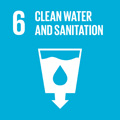- Docente: Alessandro Buscaroli
- Credits: 6
- SSD: AGR/14
- Language: Italian
- Teaching Mode: Traditional lectures
- Campus: Ravenna
- Corso: First cycle degree programme (L) in Environmental Sciences (cod. 8011)
-
from Feb 20, 2025 to May 30, 2025
Learning outcomes
At the end of the course the students will have a picture of the several disciplines implied in the study and representation of the territory and environment, and the systemic multidiscipline approach necessary in order to select the useful instruments and the appropriate techniques to acquire, analyze, record and share spatial data with continuity in digital format, with the aim to realize a territorial survey. At the end of the course the students will have a picture of the several disciplines implied in the study and representation of the territory and environment, and the systemic multidiscipline approach necessary in order to select the useful instruments and the appropriate techniques to acquire, analyze, record and share spatial data with continuity in digital format, with the aim to realize a territorial survey. Moreover the students will have the acquaintances necessary in order to read, interpret, evaluate both basic and thematic cartographies for to use them in the various professional circumstances as instrument of effective communication of environmental information.
Course contents
Callbacks of geodesy. Shape and dimensions of the Earth, cartographic reference surfaces and datum. Systems of coordinates. Introduction to the rapid topographical survey. Cartographic representation of the most common use (Mercatore direct and trasverse, Gauss-Boaga, Peters). Base and thematic cartography. The Italian official cartography. The regional technical cartography. Representation and description of the territory.
Definition, organization, fields of application of a G.I.S. C.A.D. and G.I.S. technologies. Geometric primitives (point, arc, polygon). Vector and raster structure. Data input: digitalization, external data base, GPS data acquisition. Remote sensing. Images georeferencing. Download of information from the WWW. Link to external database. Analysis and reclassification of layers. Examples of derived cartography. Topological overlay. Hot link. Query and realization of original carthography. Organization of layout. Data export.
Readings/Bibliography
Aruta L., Marescalchi P. (1981). Cartografia – lettura delle carte. Dario Floccovo Ed.
Burrough P.A., McDonnell R.A. (1998). Principles of geographical information systems. Oxford University Press.
Campbell J, (1989). Introduzione alla cartografia. Zanichelli.
Casagrande L., Cavallini P., Frigeri A., Furieri A., Marchesini I., Neteler M. (2012). GIS Open Source. GRASS GIS, Quantum GIS e SpatiaLite. Elementi di software libero applicato al territorio. Dario Flaccovio Editore.
Fondelli M. (2000). Cartografia numerica I. Pitagora editrice Bologna.
Noti V. (2. ed. 2021). Gis Open Source per geologia e ambiente. Analisi e gestione di dati territoriali e ambientali con QGIS.
Dario Flaccovio Editore
QGIS Training Manual-en - Version 3.22. – April 2022. Consultation at: https://docs.qgis.org/3.22/en/docs/user_manual/index.html
QGIS A gentle introduction to GIS - Version 3.22. Consultation at: https://docs.qgis.org/3.22/en/docs/gentle_gis_introduction/index.html
Vianello G. (1998). Cartografia e fotointerpretazione. CLUEB.Teaching methods
Power point presentations, exercises with maps, practices in GIS and GPS activities, field survey with drone. Depending on the evolution of the pandemic, lessons will take place in presence, remotely, or in mixed mode.
Assessment methods
Practical tests. In particolar, concerning cartography it will be evaluated the capacity of the student to read and to interpret the informations present in different type of maps. This will be reached via the identification of the coordinates associated to a specific location or via the description of symbols reported in the cartography.
Regarding GIS, it will be evaluated the capacity of the student to manage data inside GIS, producing spatial data analysis and new cartography. In this case, the student will be fournished of a DB of layers and will be asked to solve some problems in order to evaluate his ability to handle and manage territorial data with GIS technology.Teaching tools
Video projector, GIS, GPS, drone, stereoscope, compass, basic and thematic cartographies. TEAMS, VIRTUALE and PANOPTO platforms will be used to support teaching activities.
Students who need compensatory tools for reasons related to disabilities or specific learning disorders (SLD) can directly contact the Service for Students with Disabilities (disabilita@unibo.it) and the Service for Students with learning disabilities (dsa@unibo.it) to agree on the adoption of the most appropriate measures.Office hours
See the website of Alessandro Buscaroli
SDGs




This teaching activity contributes to the achievement of the Sustainable Development Goals of the UN 2030 Agenda.
